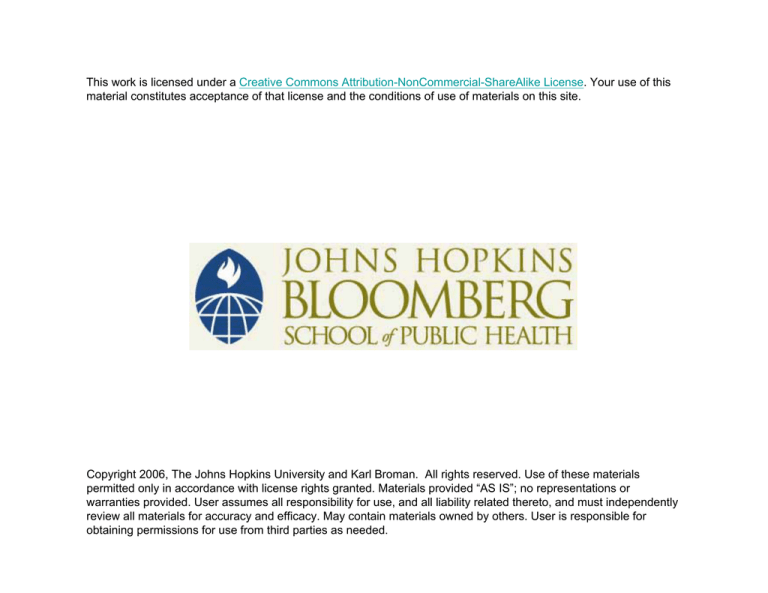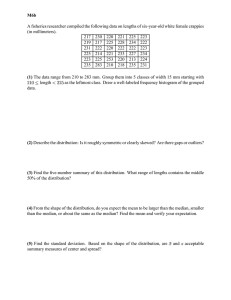
This work is licensed under a Creative Commons Attribution-NonCommercial-ShareAlike License. Your use of this
material constitutes acceptance of that license and the conditions of use of materials on this site.
Copyright 2006, The Johns Hopkins University and Karl Broman. All rights reserved. Use of these materials
permitted only in accordance with license rights granted. Materials provided “AS IS”; no representations or
warranties provided. User assumes all responsibility for use, and all liability related thereto, and must independently
review all materials for accuracy and efficacy. May contain materials owned by others. User is responsible for
obtaining permissions for use from third parties as needed.
Homework for lecture 2
Page 1 of 3
Statistics for laboratory scientists
Homework problems for lecture 2
1. Consider the following figures (taken from The Milwaukee Journal
Sentinel, Friday, 18 Jan 2002, Senior Focus, pg 2).
a. Name three things wrong with these figures.
http://www.biostat.jhsph.edu/~kbroman/teaching/labstat/third/hw02.html
3/31/2006
Homework for lecture 2
Page 2 of 3
b. Sketch an improved version of these figures.
2. Consider the following data.
12.5
11.0
10.0
10.7
9.2
9.2
10.0
10.1
9.1
9.1
a. Calculate (using a hand calculator) the arithmetic mean,
median, and SD of the above set of numbers.
b. How would the mean, median, and SD change if you added 2 to
each data point?
c. How would the mean, median, and SD change if you multiplied
each data point by 10?
d. How would the mean, median, and SD change if you multiplied
each data point by -10?
e. How would the mean, median, and SD change if you added 2 to
each data point and then multiplied each by 10?
f. How would the mean, median, and SD change if you multiplied
each data point by 10 and then added 2 to each?
3. In the following histogram, which of the red and blue line segments is
the median and which is the mean?
Also, would you guess the standard deviation (SD) of these data to
be 5, 15, or 25?
http://www.biostat.jhsph.edu/~kbroman/teaching/labstat/third/hw02.html
3/31/2006
Homework for lecture 2
Page 3 of 3
4. Guess the SD of the data in the following dotplot.
[ 3rd term syllabus | 4rd term syllabus | R for
Windows ]
Last modified: Wed Feb 22 09:45:07
EST 2006
http://www.biostat.jhsph.edu/~kbroman/teaching/labstat/third/hw02.html
3/31/2006












